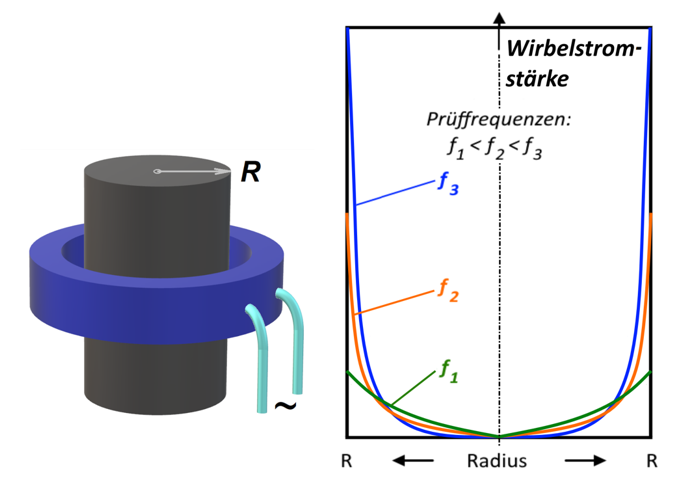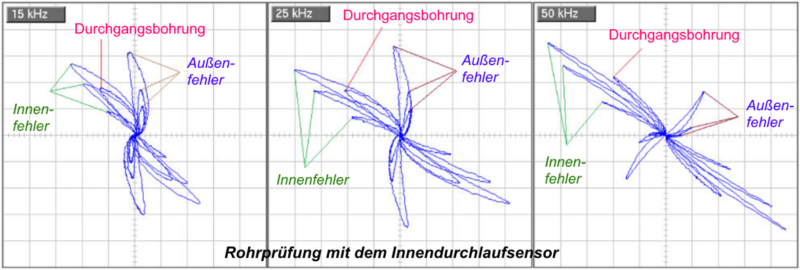In the choice of excitation frequency the requirements of the application and the probe to be used must be taken into account. The frequency range recommended for the probe can be found in the manufacturer’s data sheet for the probe.
The excitation frequency has a decisive effect on depth detection capability; i.e. the distribution of the eddy current strength in the direction of depth:
With increasing distance away from the surface the eddy current strength drops considerably. The eddy currents concentrate themselves largely on the surface; they are shielded to some extent in the direction of depth. This is known as the “skin effect”. One measure of the drop in eddy current strength with depth is the standard penetration depth. The higher the excitation frequency, the larger the strength of the eddy currents induced on the surface of the product to be tested (according to the law of induction). But on the other hand, the higher the excitation frequency, the more the eddy current strength drops in the direction of depth. (Note: The electrical conductivity and the relative permeability of the product to be tested have the same influence on the distribution of eddy current strength as does the excitation frequency.) For that reason, with the choice of frequency it is possible to exercise specific control on the measurement sensitivity as well as the zone of interaction (volume penetrated by eddy currents): High excitation frequencies generate strong eddy currents at the surface of the product to be tested and so they offer excellent sensitivity for surface defects. Because of their better penetration capacity, low excitation frequencies offer good sensitivity (detection capability) for defects lying under the surface (concealed defects). The choice of excitation frequency also has an influence on the phase separation angle of defects of different depths. This can be exploited for example in the examination of pipes using an internal coaxial probe (aka “bobbin”) with phase analysis: At low excitation frequencies the directions of signal drift (phase angles of signals) of internal defects of different depths or external defects of different depths hardly differ from one another. At increasing excitation frequency the separation angle of defects of different depths grows. This corresponds to better resolution capacity in the direction of depth. (Note: The electrical conductivity and the relative permeability of the product to be tested have the same influence on the phase separation angle as does the excitation frequency.)


